- Home
- Definition
- Stakeholder Management
Stakeholder Management
Published: 2009-07-11
Last updated: 2022-03-07
The stakeholder management process starts with the very first ideas of a project in definition phase, and does not end until final acceptance of the project results in closure phase.
Here is the definition of the term "stakeholder", as given in section Definition Phase:
Stakeholders are individuals or organizations who have an interest in or are affected by the project results or project activities.
For example, in a construction project, typical stakeholders are the future owner of the building, the construction company, their CEO, the project manager, the project team members, future neighbors of the owner, the local administration, and sub-contractors of the construction company, etc.
Stakeholders can be
- supporters
- opponents
- indifferent
in each one of the following dimensions:
- Atmosphere
- Expertise
- Financing
- Power
Also introduced in section Definition Phase, the stakeholder management process looks as follows.
We combine the first three steps into stakeholder analysis:
Identify stakeholders
Identify interests of stakeholders
Identify conflicting interests
Results of the first three steps of the stakeholder analysis determine the definition of the project goal(s) and requirements and specifications of the project results.
Usually, there are conflicting interests between stakeholders; these conflicts have to be resolved so that definition of goals, requirements, or specifications becomes possible. Thus, we need to facilitate conflict resolution of those conflicting interests as next step after stakeholder analysis. Only then, we can finalize definition of project goals and requirements or specifications of project results, and continue with further project planning.
Over time, stakeholders can change, or their interests can change. For that reason, we need to re-iterate stakeholder analysis and facilitation of conflict resolution throughout planning phase, implementation phase, and closure phase, until final acceptance of project results at the end of the project. It is this periodical re-iteration that makes up the stakeholder management process.
Stakeholder Analysis
First step into stakeholder management is the identification of stakeholders. Leading questions are:
- Who is interested in the success of the project?
- Who has interest in the project results?
- Who is going to use the project results?
- Who will benefit from the project results?
- Who will benefit from the project work?
- Who will influence decisions?
- Who has to perform the work?
- Who will suffer from the work (e.g. from noise of construction activities, etc.)?
- Who wants the project to fail?
- etc.
As a further result, we also recognize supporting, indifferent, and opposing stakeholders. Second step is the identification of stakeholders' interests in terms of dimensions and details. We can achieve this only by talking to all the individual stakeholders or their representatives.
For the first two steps of stakeholder analysis, we can apply some tools to visualize our analysis. The first one is a stakeholder table that summarizes all stakeholders, their dimensions of interest, their intensities of interest, and remarks about the most important details. Here is an example, project "Yellow", to show how such a stakeholder table could look like.
The next tool is drawing up stakeholder profiles which give us a good overview of the dimensions of interest by stakeholder. Project "Yellow" obviously has two strong supporters in the dimensions atmosphere, financing, and power, but also a strong opponent in dimension atmosphere.
The third tool is analysis by stakeholder dimensions. With this one we can recognize dimensions where we have support, opposition, conflicting interests, or indifference. In our example, we find that project "Yellow" tends to have support in the dimensions financing and power; in the dimensions atmosphere and expertise, support and opposition are equally distributed, indicating potential conflicts.
In order to visualize and analyze relationships like alliances and conflicts between stakeholders we use stakeholder network diagrams. For project "Yellow", this chart shows the two major conflicts already indicated in the analysis by stakeholder dimensions. We gain additional information about alliances between stakeholders.
We observe that, for successful projects, support in all dimensions is predominant. For our example, project "Yellow", we should therefore try to proactively clarify or resolve conflicts in dimensions atmosphere and expertise.
Conflict Resolution
Proactive conflict resolution is the central task of stakeholder management. While stakeholder analysis discovers conflicting interests of stakeholders, resolution of major conflicts is essential in order to win or sustain support for successful project management. The resolution of conflicts is one of the main responsibilities of the project manager, although he can delegate the task of facilitating conflict resolution. In different dimensions, we use different tools.
In the dimensions of atmosphere and power, we find conflicts predominantly in inter-personal communication in teams, between individuals, etc. In these cases, conflict coaching or conflict mediation usually reveals reasons and possible ways of resolution.
If we find conflicts in the dimensions of expertise and financing, e.g. different technical approaches or rivaling financing concepts, classical problem solving techniques are helpful.
Most conflicts are more complicated combinations of different dimensions. For the serious ones, we recommend to engage independent conflict coaches or mediators who can facilitate conflict resolution sessions or workshops.
35+ templates, tools, and checklists in one set
To save you time in your daily work as a project manager, I packaged more than 35 project management templates, tools, and checklists into one zip file.
- You un-zip it, and you get all items in formats you can edit to your requirements.
- They strictly contain only standard functionality and no macros or other code.
- You are allowed to use your logo.
or click here for more info.
Traditional PM
Learning Path Navigation
|
|
|
Return from Stakeholder Management to Home Page
|
|
|
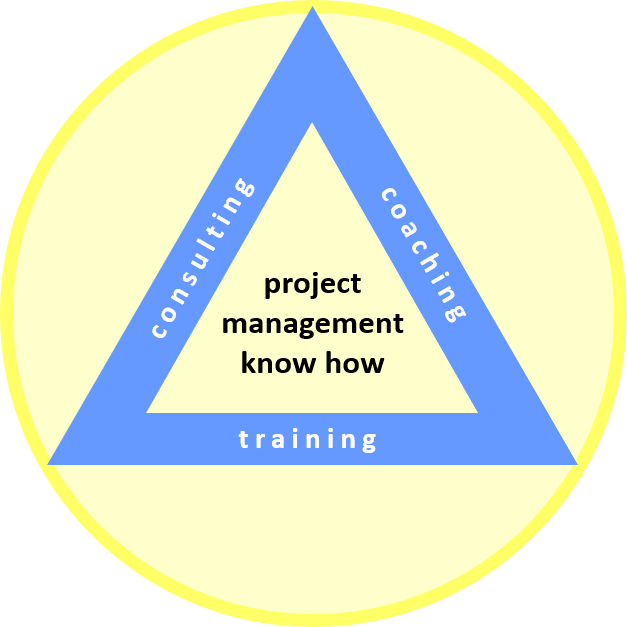
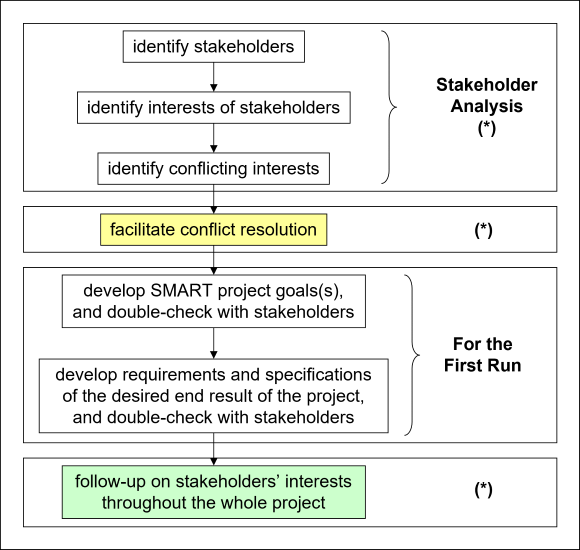
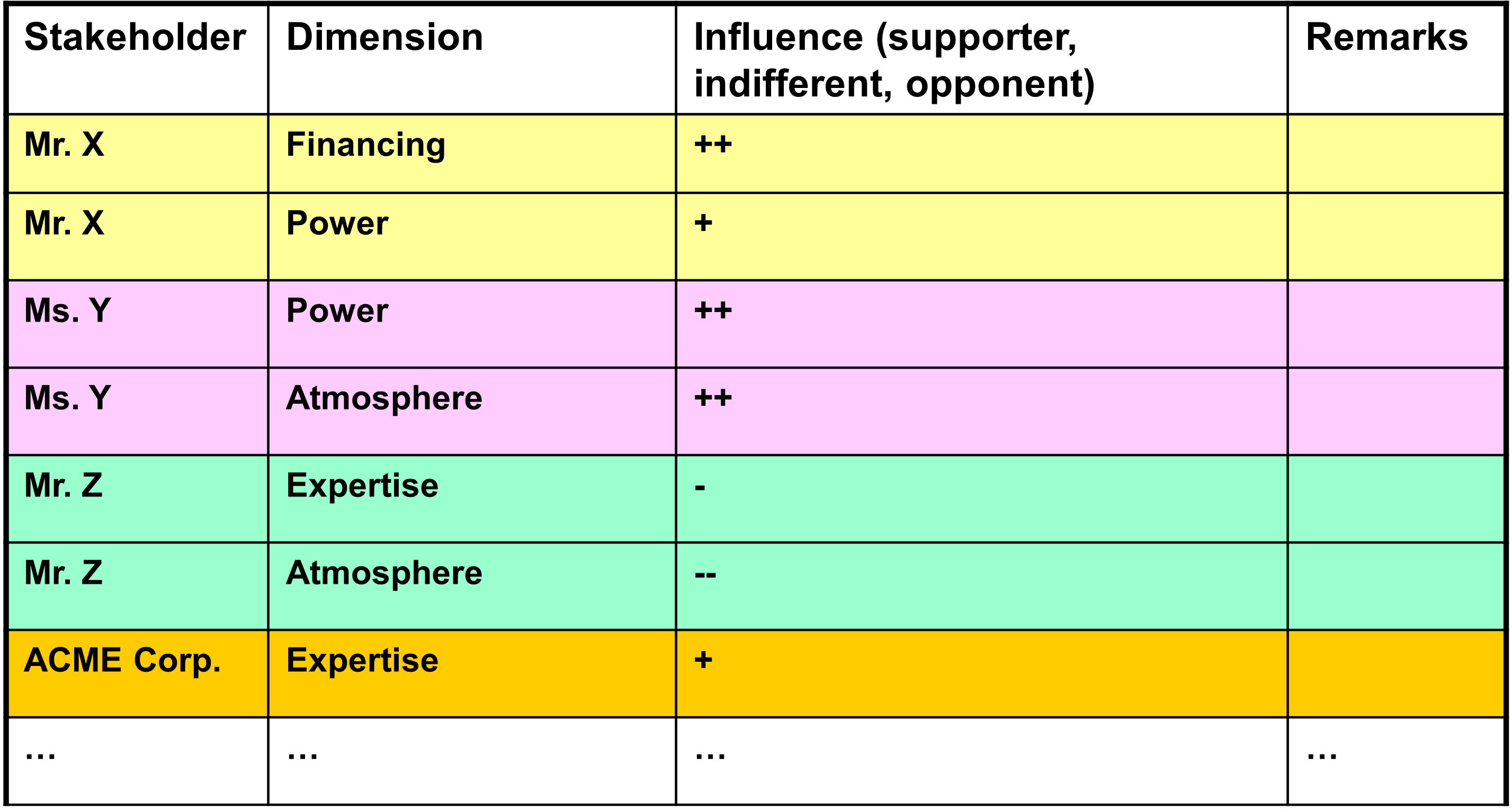
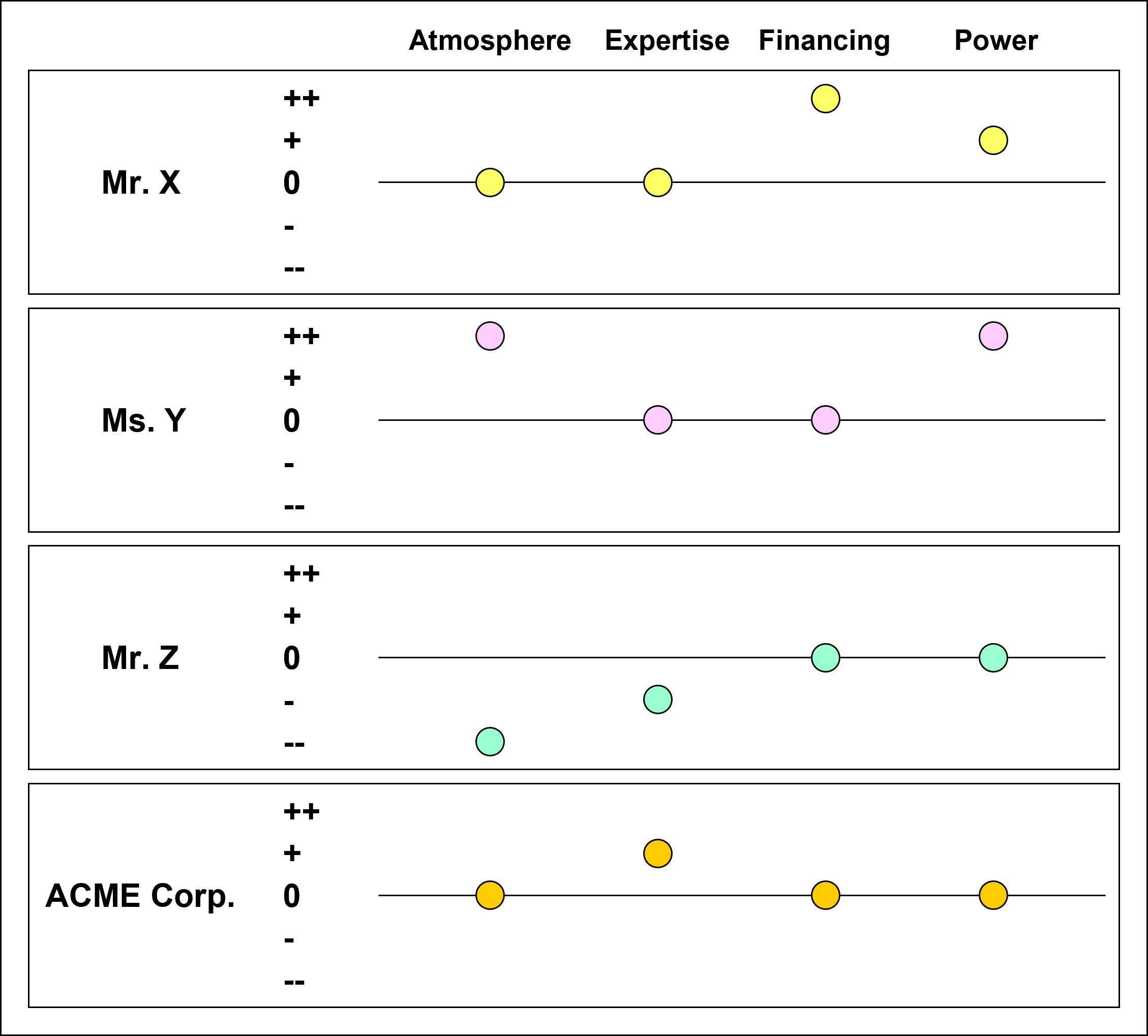
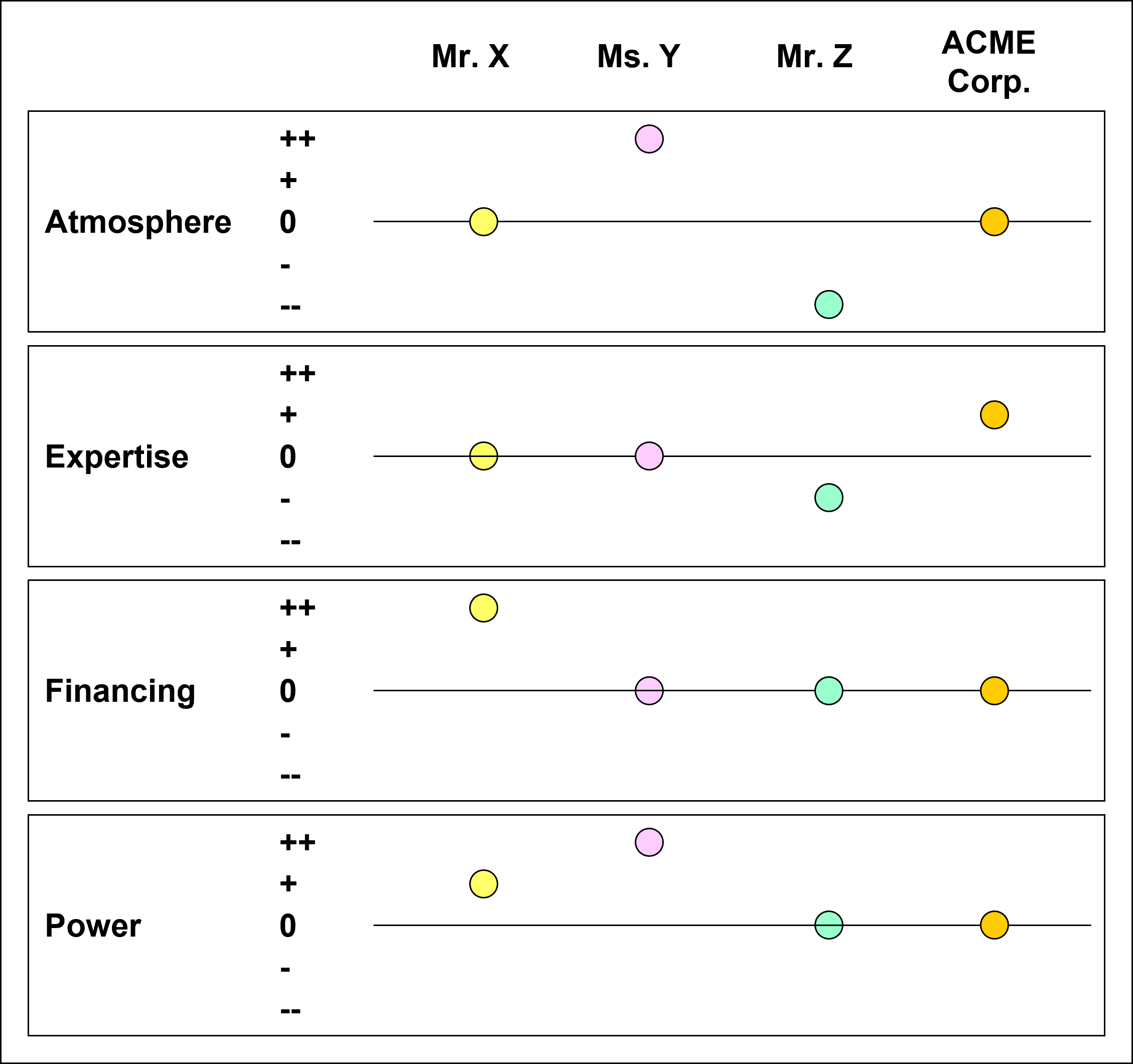
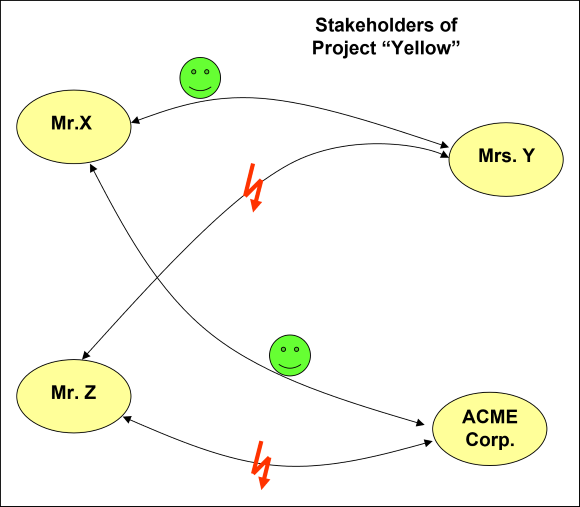

Your Comments
Have your say about what you just read! Leave me a comment in the box below.